This is a continuation of a series of posts on the Fuji GFX 50S. You should be able to find all the posts about that camera in the Category List on the right sidebar, below the Articles widget. There’s a drop-down menu there that you can use to get to all the posts in this series; just look for “GFX 50S”.
A few days ago, I published a study of the focus shift and autofocus errors of the Fuji GFX 50S using the Fuji 45 mm f/2.8 lens. I repeated the test with the 110 mm f/2, and the 63/2.8. Yesterday, I posted the results of testing the last lens in this series, the 32-64 mm f/4. I performed the tests at 64 mm focal length. Now I’ll do the same at 44 mm.
First, focus shift:
I’ve plotted the three Adobe RGB color channels. The graph presents displacement of the image projected on the sensor from the desired green-channel focal plane, not the error in the object field in front of the lens. The reason for doing this is to allow easier comparison of lenses of different focal lengths at various target distances. Negative numbers indicate front-focusing. The image-plane shift is in micrometers (um). The separation of the focal distances of the three color planes is because of the longitudinal chromatic aberration (LoCA) of the lens. There were ten exposures at each f-stop. I’ve plotted lines indicating the average (aka mean or mu) of the sample set bolder and added thin lines above and below the means that are one standard deviation (sigma) away from them. The focus shift is away from the camera as you stop down. That means this lens, at this focal length and at this distance, is undercorrected for spherical aberration.
Here are the circles of confusion (CoCs) implied by the above amount of focus error.
If we look at luminance, here is what the above graph looks like:
The worst case CoCs are under one-half the pixel pitch. Unlike at 64 mm, there is no reason to stop down when focusing this lens at this distance and focal length.
Now we’ll look at autofocus performance, in Af-S mode with the next-to-smallest focusing area:
Wow! Even wide open, these are good results, and look at the consistency when the lens is stopped down to f/5.6 and narrower.
For completeness, here are the luminance results:
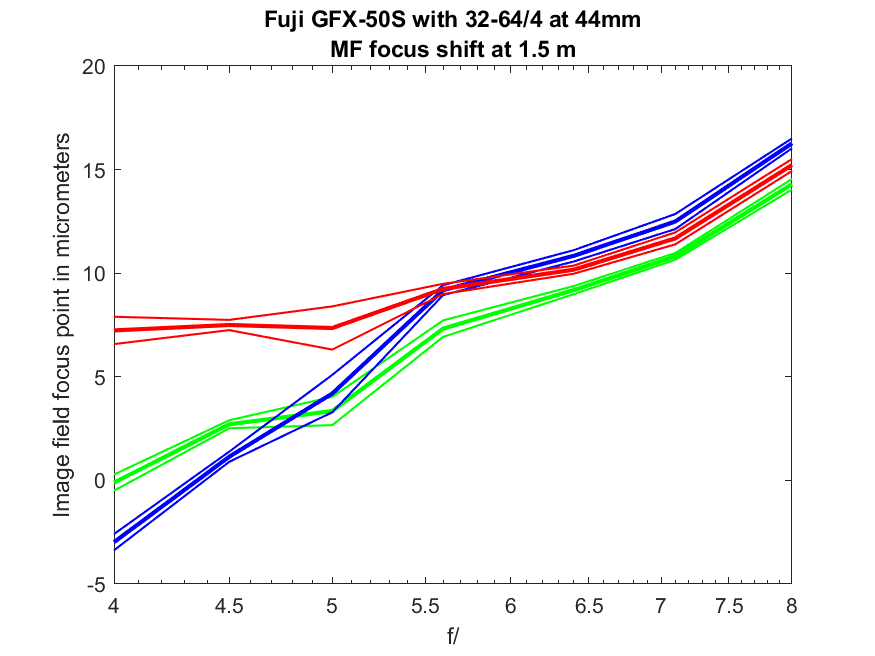
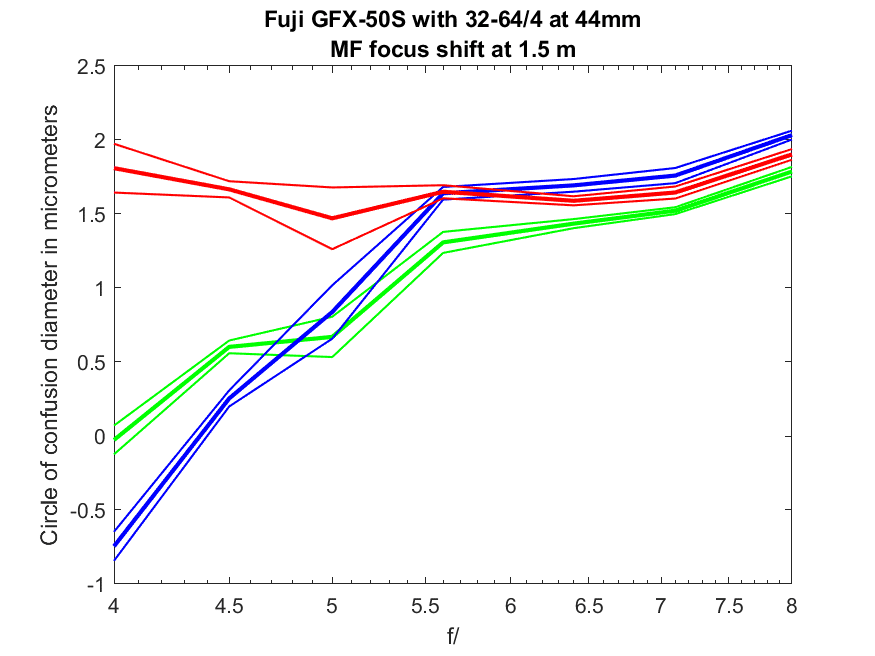
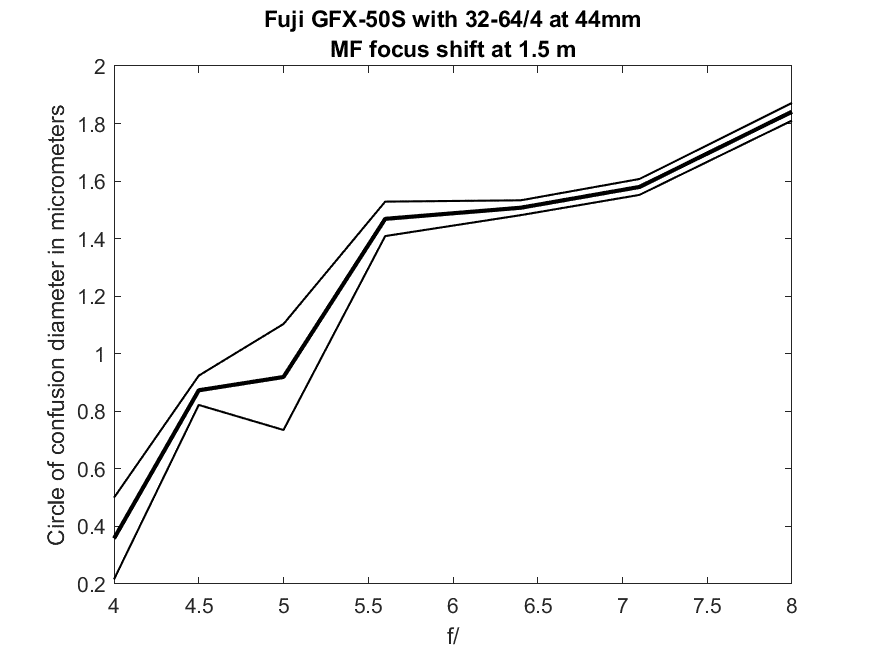
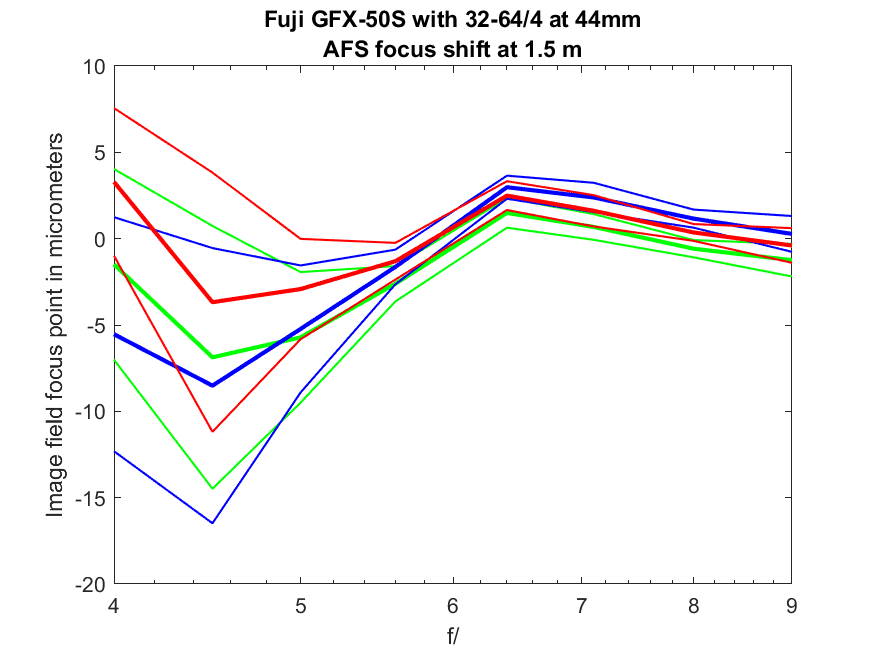
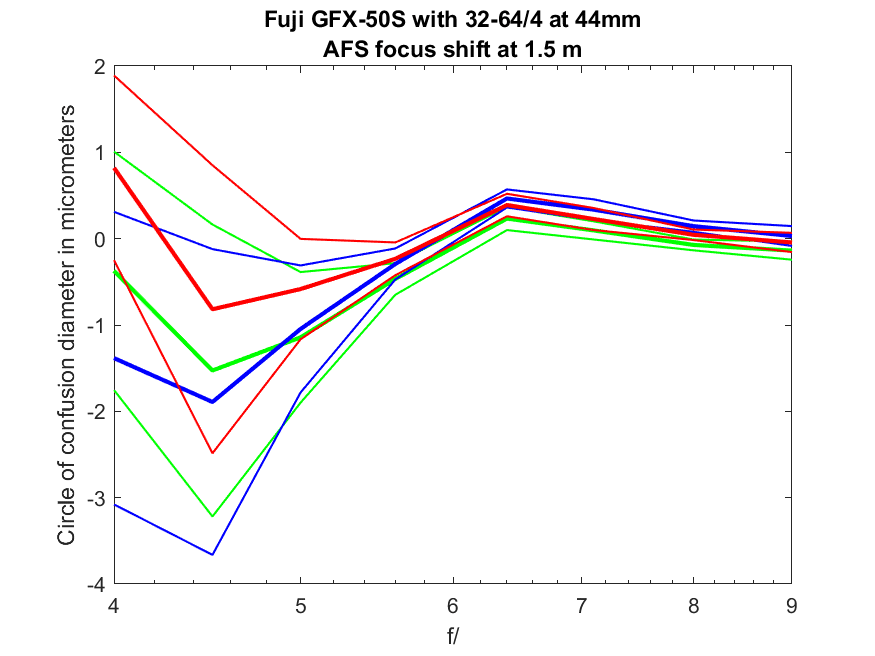
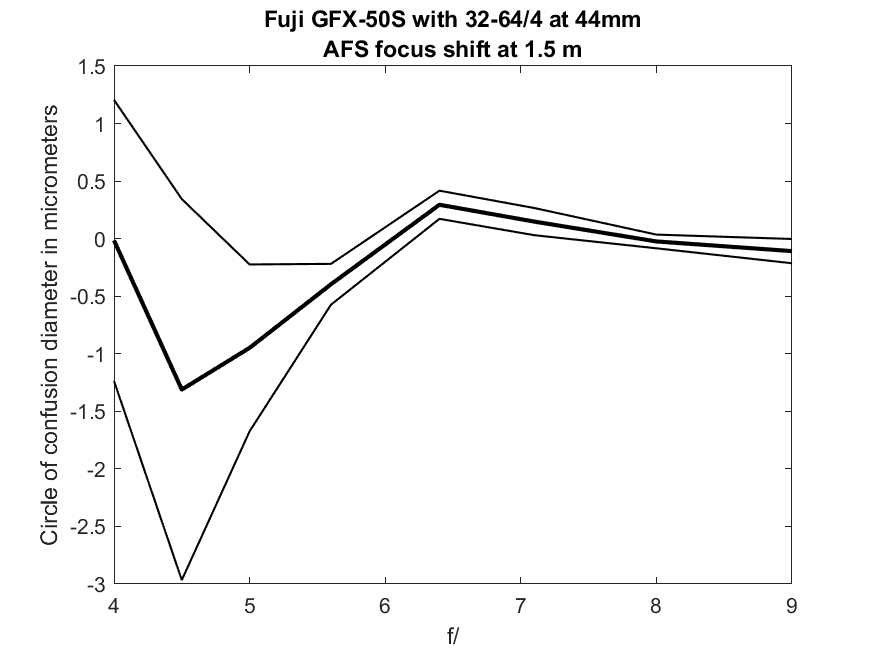
[…] the last lens in this series, the 32-64 mm f/4. I performed the tests at 64 mm focal length. Earlier today I did the same at 44 mm. Now I’ll finish with the 32 mm […]